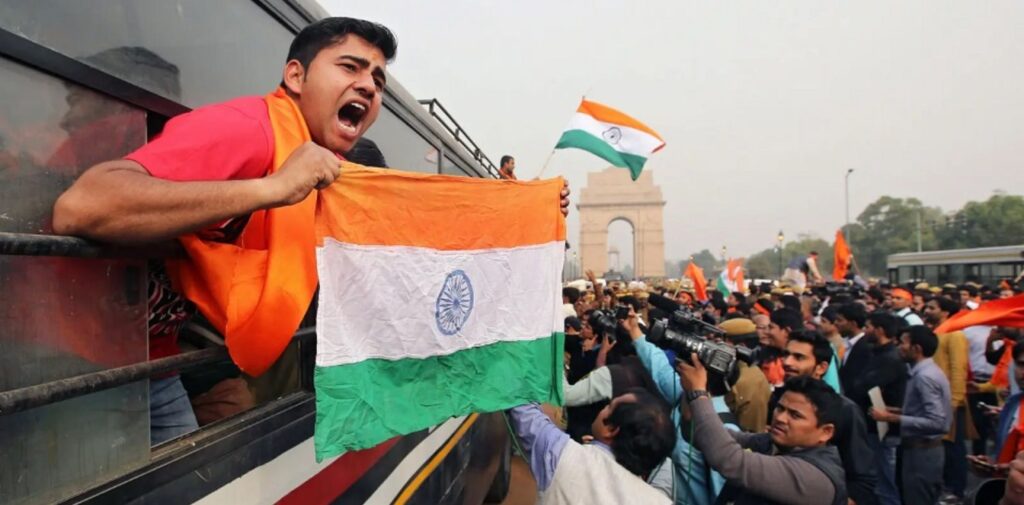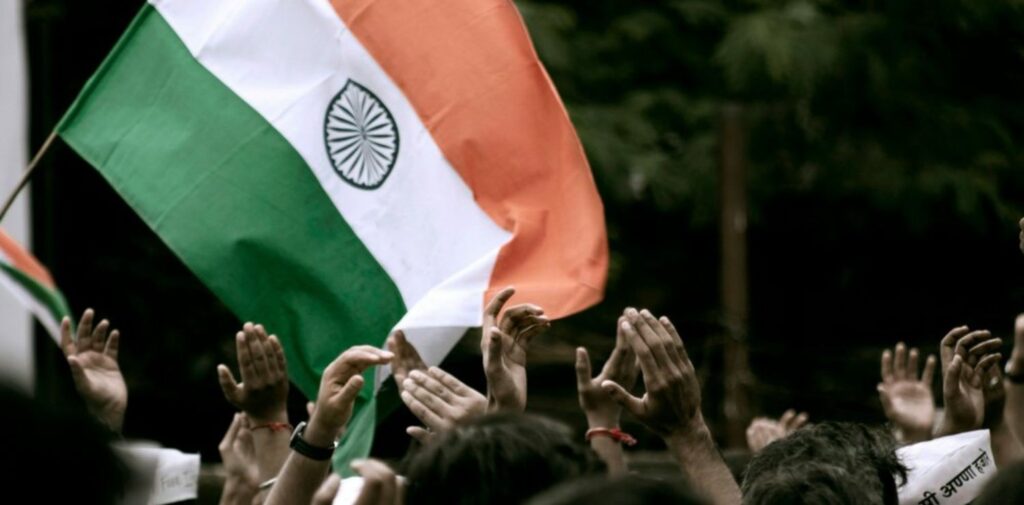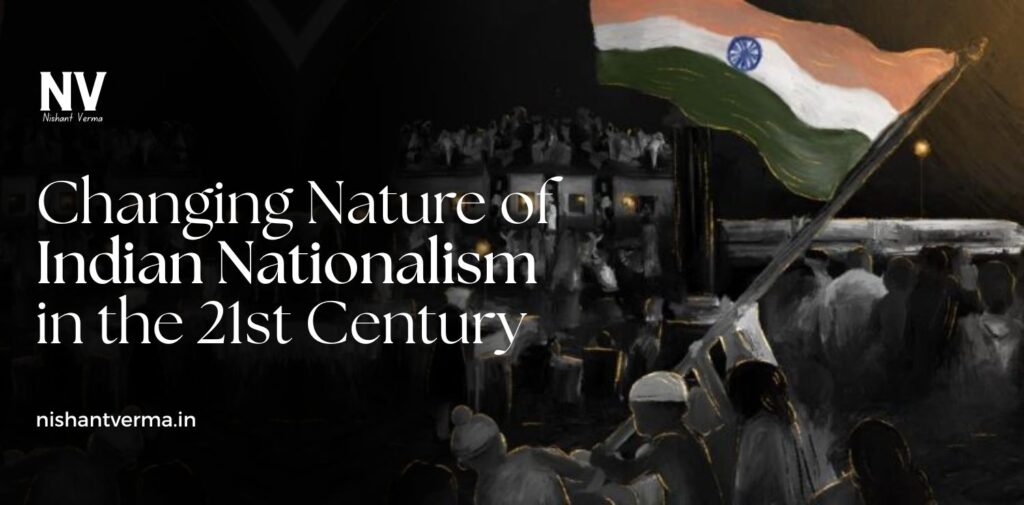Indian nationalism, which has always been a powerful force shaping the country’s identity, has undergone significant transformations in the 21st century. From the days of the Indian independence movement to the present day, nationalism in India has evolved in response to changing political, social, and economic conditions. As India steps deeper into the 21st century, the nature of its nationalism is being shaped by various new challenges, opportunities, and global trends. This article explores the Changing Nature of Indian Nationalism in the 21st Century, looking at its key characteristics, influences, and the new forms it has taken in recent years.
The Roots of Indian Nationalism
To understand the changing nature of Indian nationalism, it’s important to first look at its roots. Nationalism in India was born during the British colonial period, primarily as a response to colonial exploitation and the desire for freedom. It gained momentum through the leadership of figures like Mahatma Gandhi, Jawaharlal Nehru, and Subhas Chandra Bose, who united millions of Indians in their fight against British rule. The Indian National Congress, which initially aimed for reforms, transformed into a mass movement for complete independence under the leadership of Gandhi. Indian nationalism during this period was largely inclusive, rooted in the values of non-violence, unity, and secularism.
After India gained independence in 1947, the nation’s identity was built around a democratic, secular, and inclusive vision. The vision of nationalism post-independence focused on nation-building, social justice, and creating a modern, progressive India. The Constitution of India, adopted in 1950, enshrined the values of liberty, equality, and fraternity, setting the tone for the kind of nationalism that would be promoted in the country in the following decades.

The Shift to a New Kind of Nationalism
The turn of the 21st century has brought a noticeable shift in Indian nationalism. Several factors have contributed to this transformation, including changes in the political landscape, the rise of new social movements, and the impact of globalization. In the 21st century, nationalism in India has started to reflect more diverse, and sometimes contradictory, forces.
One of the key drivers of this shift is the rise of right-wing politics in India. The Bharatiya Janata Party (BJP), under the leadership of Narendra Modi, has promoted a form of nationalism that is closely tied to Hindu cultural identity. This form of nationalism emphasizes the idea of India as a Hindu-majority nation, celebrating Hindu traditions, symbols, and religious practices. This shift has led to a more overtly religious expression of nationalism, which contrasts with the secular ideals that dominated post-independence India.
The rise of Hindu nationalism has also brought with it a more assertive and aggressive form of nationalism. This includes an emphasis on national pride, the protection of national interests, and a stronger stance on issues such as national security and the preservation of Indian culture. This new form of nationalism is often defined by a sense of urgency and is marked by the rhetoric of making India great again, which resonates with many who feel that India’s potential has not been fully realized on the global stage.
Impact of Globalization on Indian Nationalism
In the 21st century, globalization has also had a significant impact on the nature of Indian nationalism. Globalization, characterized by increased economic, social, and cultural interconnectedness, has introduced new ideas and challenges that have influenced Indian national identity. As India has become a key player in the global economy, there has been an increasing emphasis on economic growth, technological advancement, and international relations in shaping national priorities.
However, globalization has also brought about a sense of vulnerability, especially in terms of cultural identity. As Western cultural values and ideas have become more widespread, there has been a growing concern among some sections of society about the loss of traditional Indian values. This fear has led to a rise in movements that advocate for the protection and preservation of Indian culture, often in opposition to what is seen as the threat of foreign influences. This clash between modernity and tradition has become a defining feature of 21st-century Indian nationalism.
Additionally, globalization has created a more interconnected world, where issues such as climate change, terrorism, and global economic challenges require international cooperation. This has led to a more outward-looking form of nationalism in India, where national pride is not just about internal strength but also about how India is perceived globally. The country’s rise as a global economic and political power has influenced how nationalism is practiced, with increasing focus on India’s role in global governance and its engagement with international institutions like the United Nations and BRICS.

Regional Nationalism and Identity Politics
Alongside the broader nationalistic trends, regional nationalism has also become an important feature of Indian politics in the 21st century. India is a diverse country, home to a multitude of languages, cultures, and religions. While there is a strong sense of national unity, regional identities have always played a significant role in shaping the political landscape.
In the 21st century, regional parties have gained increasing influence in shaping the nature of Indian nationalism. Political movements in states like Tamil Nadu, West Bengal, and Punjab have focused on the protection of regional culture, language, and autonomy. These movements have often called for greater state rights and resources, reflecting the complex relationship between national unity and regional diversity.
In some cases, regional nationalism has also been intertwined with identity politics, where communities seek greater recognition and empowerment. For instance, in states like Kashmir and the North-East, there have been demands for greater autonomy or even independence. These movements highlight the challenges of reconciling regional aspirations with the idea of a unified India. The government’s response to these issues has often been a delicate balancing act between promoting national unity and respecting regional identities.
The Role of Social Media and Technology in Shaping Nationalism
Another significant change in Indian nationalism in the 21st century has been the role of social media and digital technology. The rise of the internet, smartphones, and social media platforms has revolutionized how people engage with politics and nationalism. Platforms like Twitter, Facebook, and WhatsApp have become critical tools for political mobilization, discussion, and expression of nationalistic ideas.
Social media has allowed individuals and groups to express their views on nationalism in a way that was not possible in the past. Political parties and leaders have increasingly turned to social media to communicate directly with the public, bypassing traditional media channels. This has made nationalism more personalized, with individuals able to shape and share their own nationalistic narratives.
However, the digital age has also brought new challenges. Social media has often been used to spread divisive and polarizing content, which can exacerbate tensions within society. Fake news, hate speech, and online trolling are some of the negative aspects of the digital revolution that have impacted the nature of nationalism. In some cases, the rise of online nationalism has led to an increase in intolerance, communal violence, and a hardening of ideological positions.

Nationalism and Youth in the 21st Century
The youth of India, who are increasingly connected to the global world, have a distinct approach to nationalism. For many young Indians, nationalism is about asserting India’s place on the global stage, focusing on economic growth, technological innovation, and national pride. The idea of “New India,” promoted by Prime Minister Modi, resonates with young people who are eager to see India become a global leader.
However, youth in India are also deeply engaged with issues such as social justice, equality, and environmental protection, which reflect a more inclusive form of nationalism. Many young Indians are using their voices to challenge the dominant political narratives, seeking a form of nationalism that is inclusive, democratic, and focused on progress for all citizens, regardless of their caste, religion, or background.
The rise of student-led movements and activism, such as the protests against the Citizenship Amendment Act (CAA) and the National Register of Citizens (NRC), shows that the younger generation is actively participating in redefining the contours of Indian nationalism. These movements represent a shift towards a more critical and inclusive form of nationalism, where the focus is on social justice, equality, and human rights.
Conclusion: Indian Nationalism in the 21st Century
Indian nationalism in the 21st century is complex and multifaceted. It reflects the tensions between tradition and modernity, regional identities and national unity, as well as the impact of globalization and digital technology. The nationalism of today is no longer defined by a single narrative but is shaped by diverse voices and experiences.
As India continues to grow as a global power, its nationalism will continue to evolve. Whether it’s through the rise of Hindu nationalism, the demands for regional autonomy, or the growing involvement of youth in national politics, the nature of Indian nationalism in the 21st century will be defined by its ability to adapt to the challenges of the modern world while staying rooted in its rich history and diverse culture.




